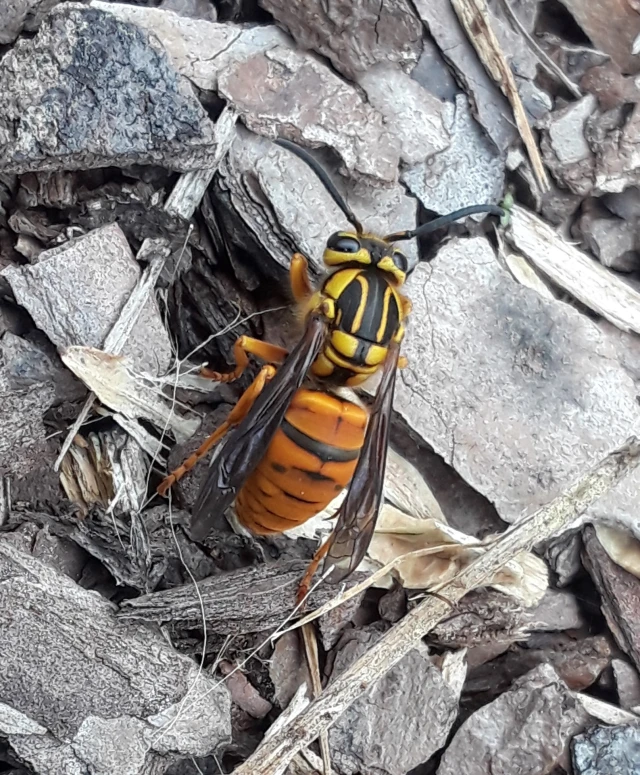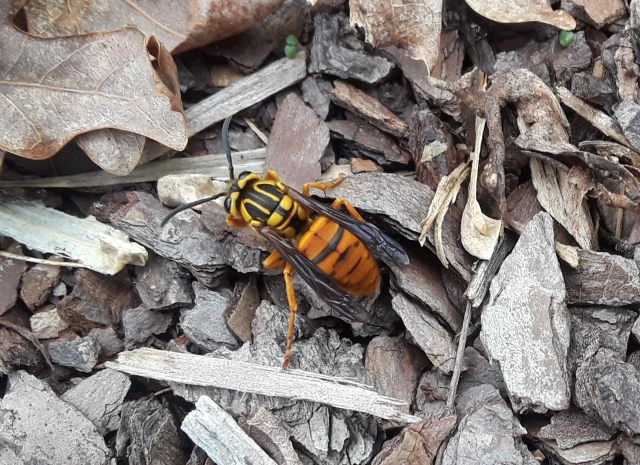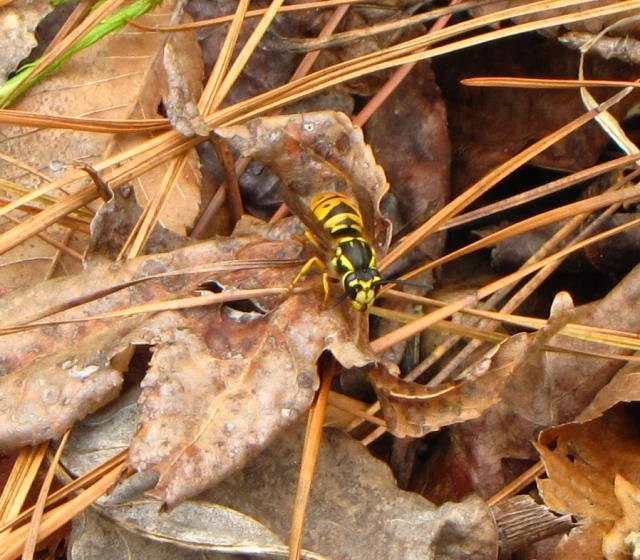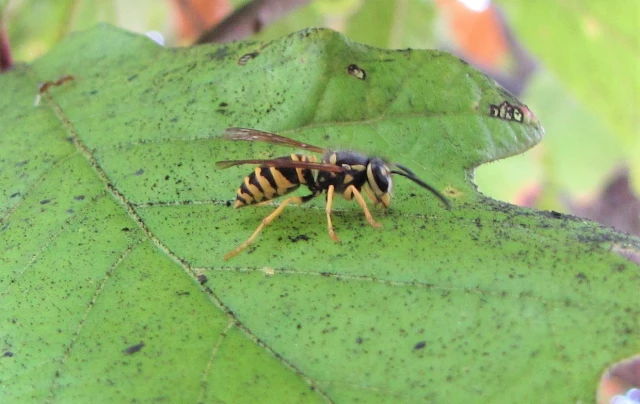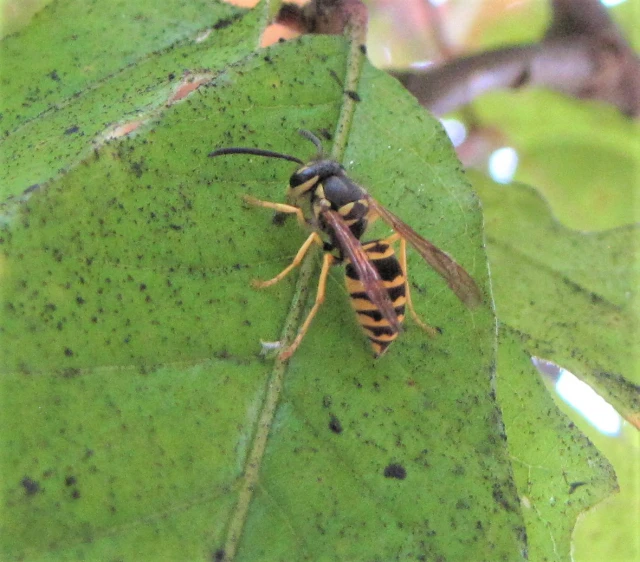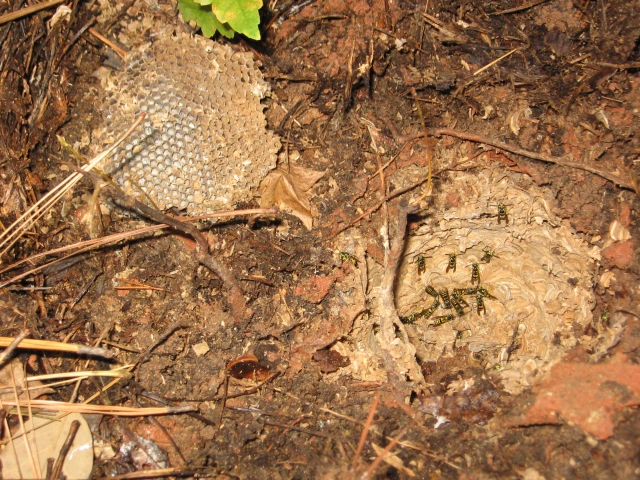There are two common species of yellowjackets in North Carolina and the Southeast. They are: the eastern yellowjacket – Vespula maculifrons, and the southern yellowjacket – Vespula squamosa. They are industrious and hard working social insects with somewhat similar life cycles. The eastern yellowjacket queen breaks hibernation in the early spring, searches for a nest site, constructs the nest, lays eggs, feeds the emerging larvae who then pupate and emerge as worker adults, ready to continue nest building and feeding the new larvae. The nest population grows, and in late fall, the new queens mate with the males, and leave the nest to search for a good hibernation site to spend the winter. The southern yellowjacket orange queen takes a different approach. See a typical southern yellowjacket queen below.
The southern yellowjacket queen emerges from hibernation a month or more later than the eastern, and simplifies the cycle by finding a recently constructed nest of the eastern yellowjacket. She enters the nest, murders the queen, and appropriates the nest and workers, who don’t seem to mind the change in executive management at the top. The orange queen southern yellowjacket is much larger than the host queen, which makes the takeover a no contest event. This behavior makes southern yellowjackets facultative social parasites. The facultative aspect means that they do not rely totally on finding an existing nest, but can build a nest and start a cycle on their own. However, they are successful at nest raiding about 85% of the time.*
The smaller, yellow and black eastern yellowjacket queen is pictured below for comparison. They can often be seen searching for a nest site in early March in the southern parts of their range.
Photos of several eastern yellowjacket workers are seen below.
Eastern yellowjacket nests are also subject to predation from raccoons and skunks. In the photo below, a raccoon has dug out a nest and eaten the larvae and many of the worker yellowjackets.
Closer views of the comb, the outer shell of the nest, and the remaining yellowjackets are seen below.
Yellowjackets in the Southeast are often highly prolific, with an average colony having 1500 workers and capable of producing 1000 queens.* No wonder they are so commonly seen in the summer and fall.
Herb Amyx
* Nesting Biology of the Southern Yellowjacket, Vespula squamosa (Hymenoptera: Vespidae): Social Parasitism and Independent Founding
John F. MacDonald and R. W. Matthews
Journal of the Kansas Entomological Society
Vol. 57, No. 1 (Jan., 1984), pp. 134-151

